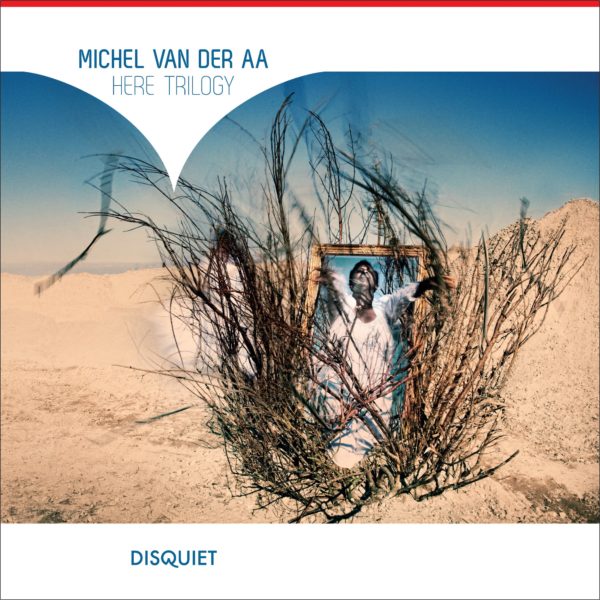In his Here trilogy, composer Van der Aa draws the listener into the musical exploration of the clash between the individual and his surroundings. His irrepressible fascination for theatrical and visual means is one recurring feature of the trilogy. A recognizable harmonic signature is evidence of his economical use of material. The harmonic DNA of the Here trilogy consists in each of the three sections of the same eleven chords, both in the orchestra and the soundtrack.
Here [in circles] is the heart of the trilogy, and in its instrumentation (five strings, trumpet, clarinet and bass clarinet, percussion and soprano) it is the most fragile and intimate section. The role of the soundtrack has been reduced to the most basic and spontaneous form possible. The soprano operates a cassette recorder on which she records herself and the ensemble in real time; she rewinds, fast-forwards and plays back, illuminating the cyclical hopelessness of the music on a small scale. It is worth noting that Van der Aa is the author of the texts sung by the ‘dramatis persona’ (the soprano) for Here [in circles] and Here [to be found]. An existing text would never be able to reflect the musical progress as organically as words the composer writes himself. And that very organic indivisibility of drama (text) and structure (music) is characteristic of Michel van der Aa’s compositional style, one that avoids ‘imposed emotionality’ at all costs.
Both in Here [in circles] and Here [to be found], the soprano undergoes a certain development. In their content, Van der Aa’s texts are intentionally murky, strengthening the intended ambiance of disengaged derangement. Words are employed as figurative colouring of the sound, not as literal transmitters of a particular message. ‘Music has the potential to be unspecific,’ says the composer. ‘It can suggest an ambiance and still leave room for the listener’s own imagination. The more concrete the text, the less three-dimensional the music.’
In Here [in circles] the dramatic ‘ego’ attempts to break loose from the cyclical progression of the music. The contact between the extremely virtuosic, harried soprano, the live ensemble, the soundtracks and the incisive snip and click sounds (a percussionist flicking fake electric switches) are alternately alarming and internalized. The music only reaches a kind of repose at the end, where the soprano enters into an emotional, schizophrenic dialogue with the shadows of her own voice on tape.
— Mischa Spel




